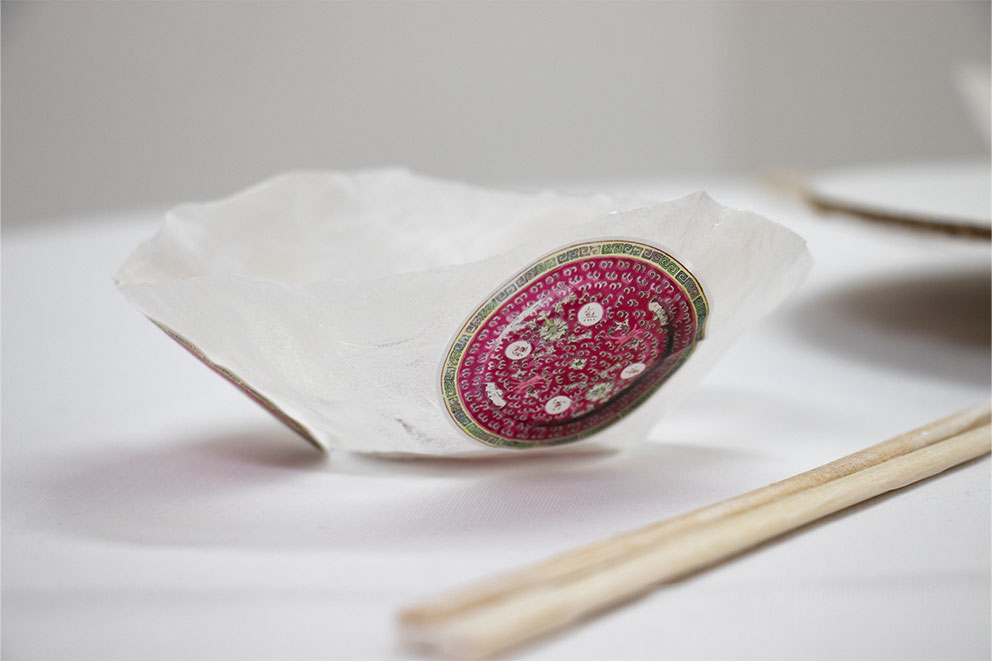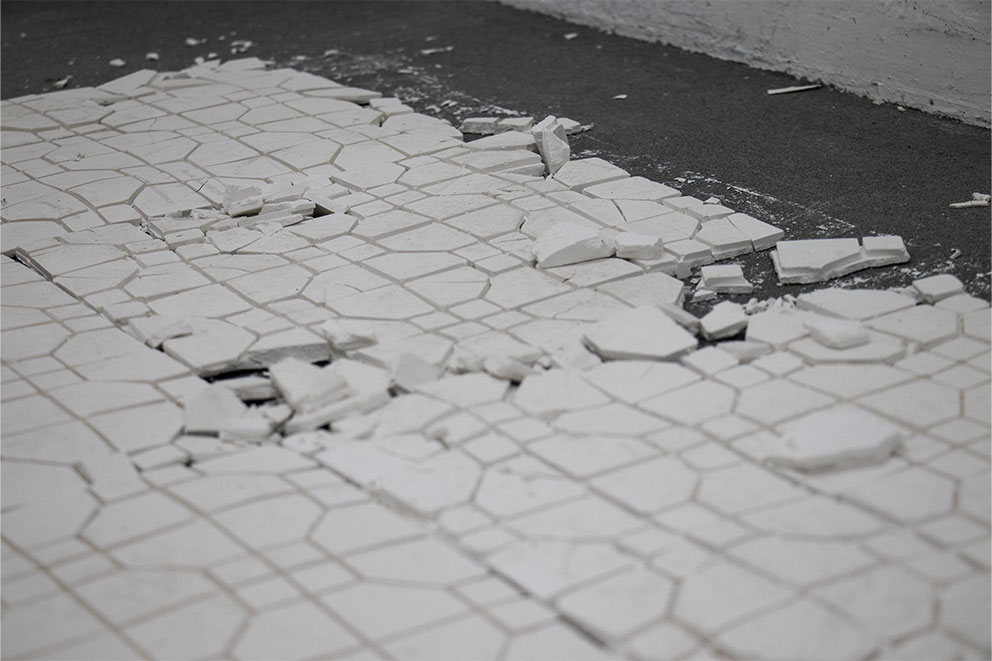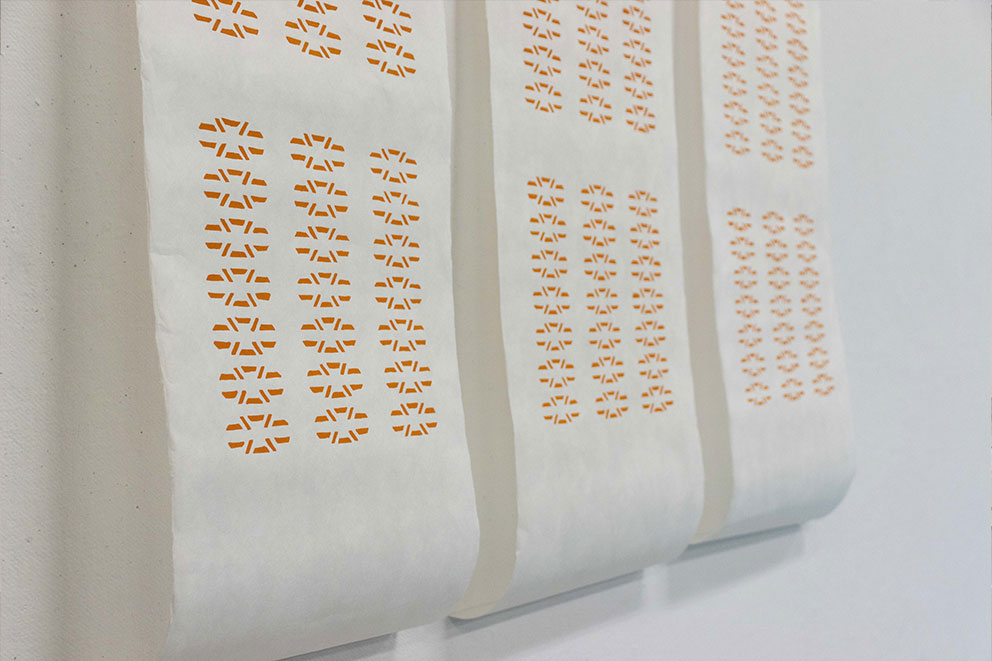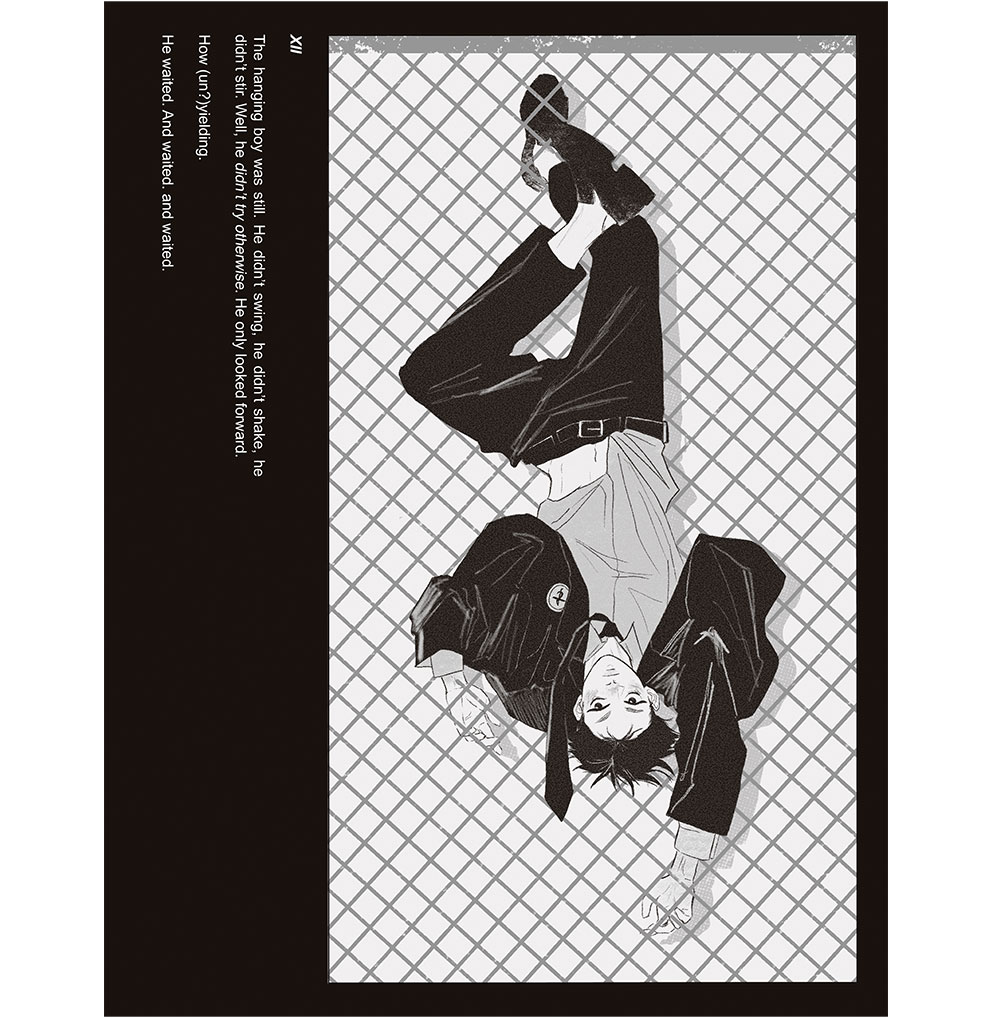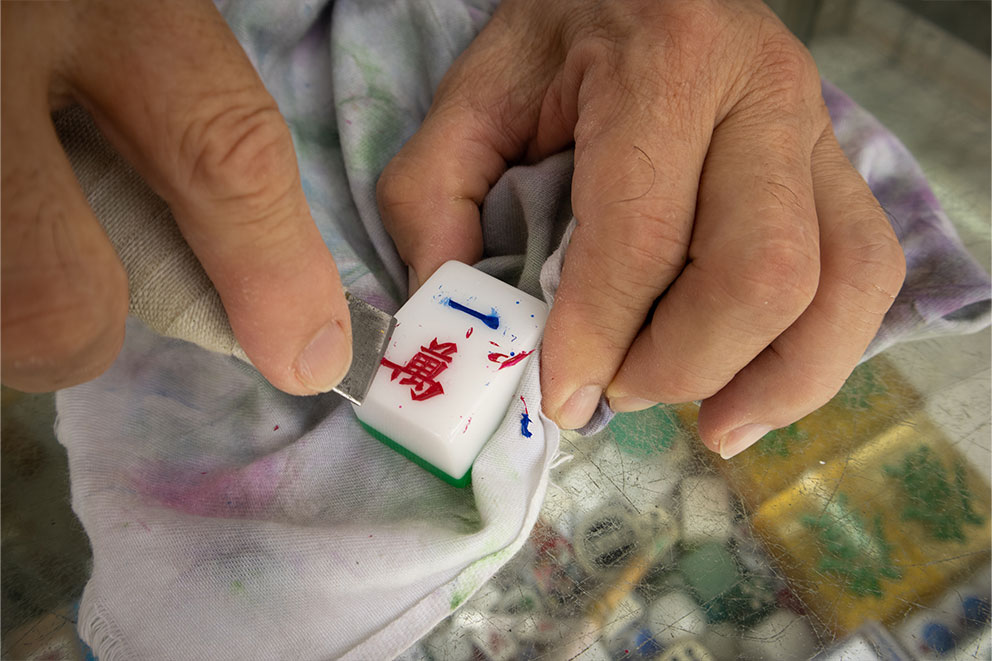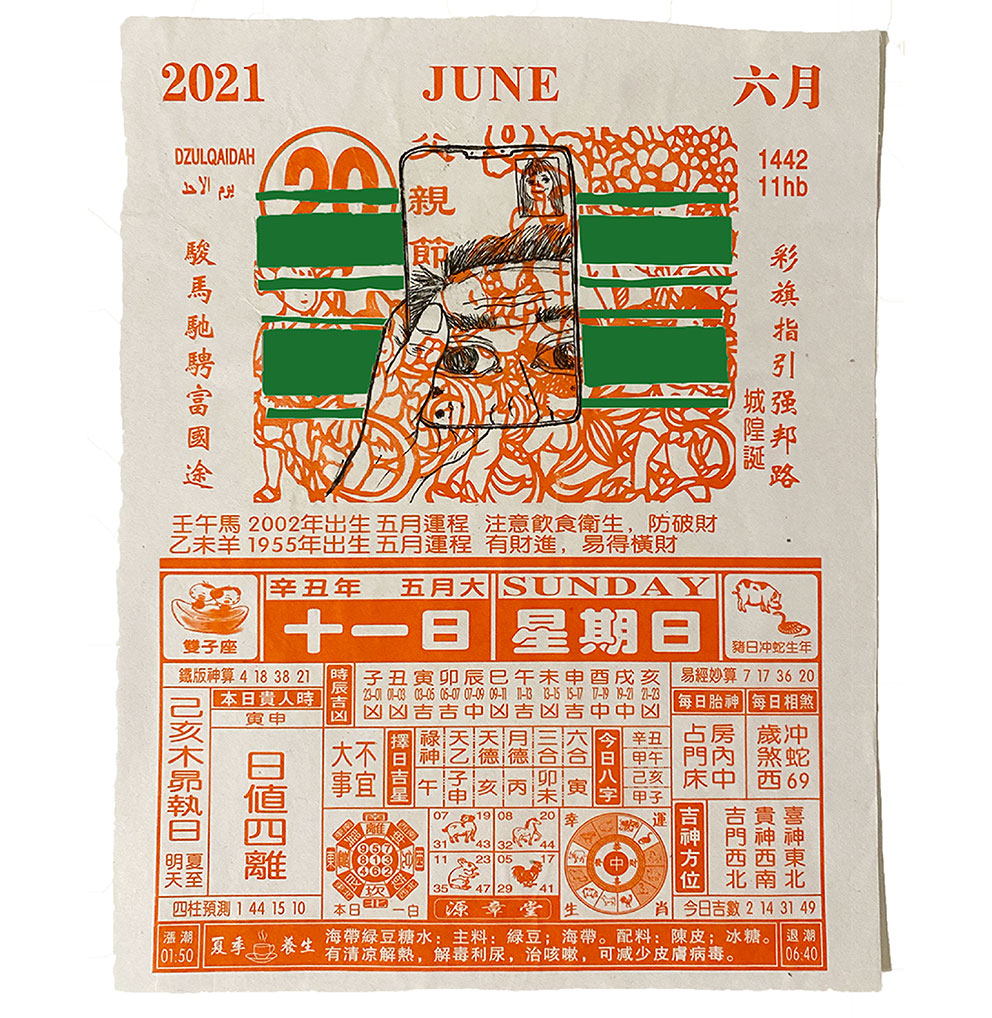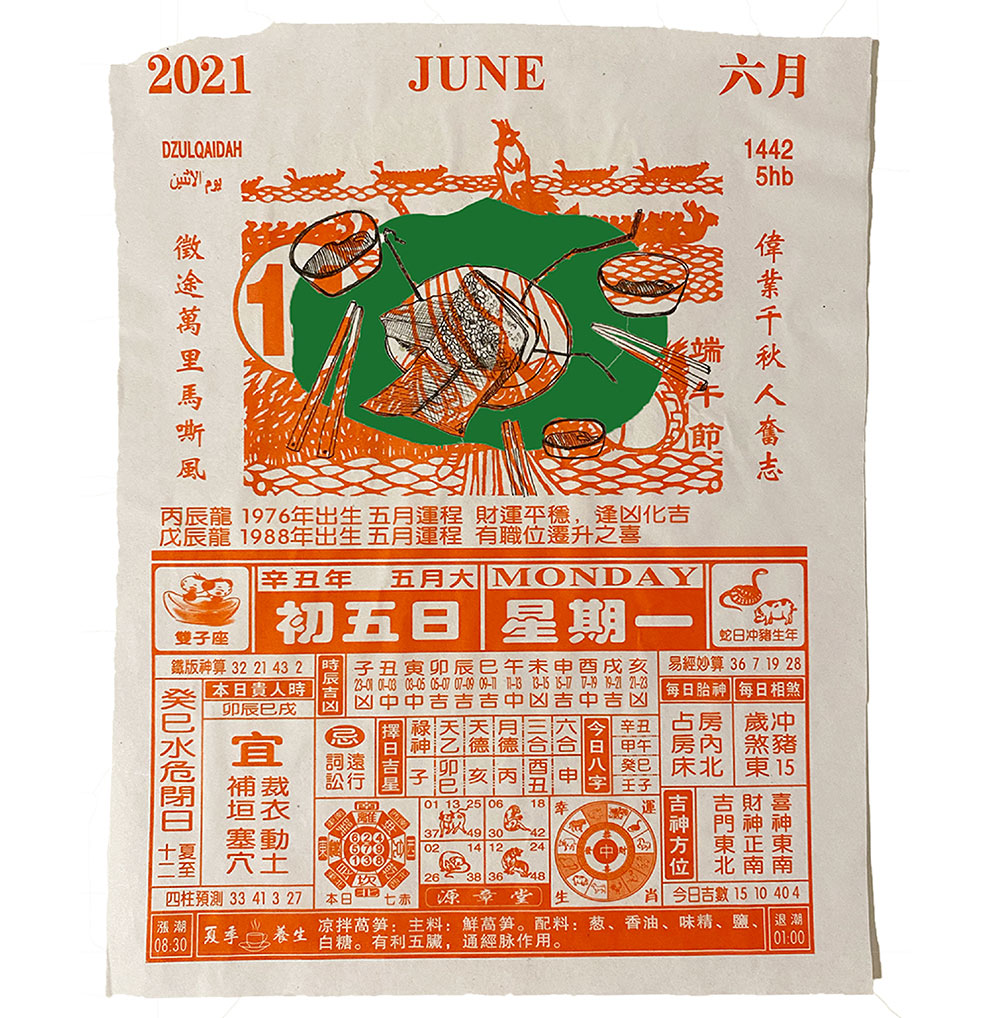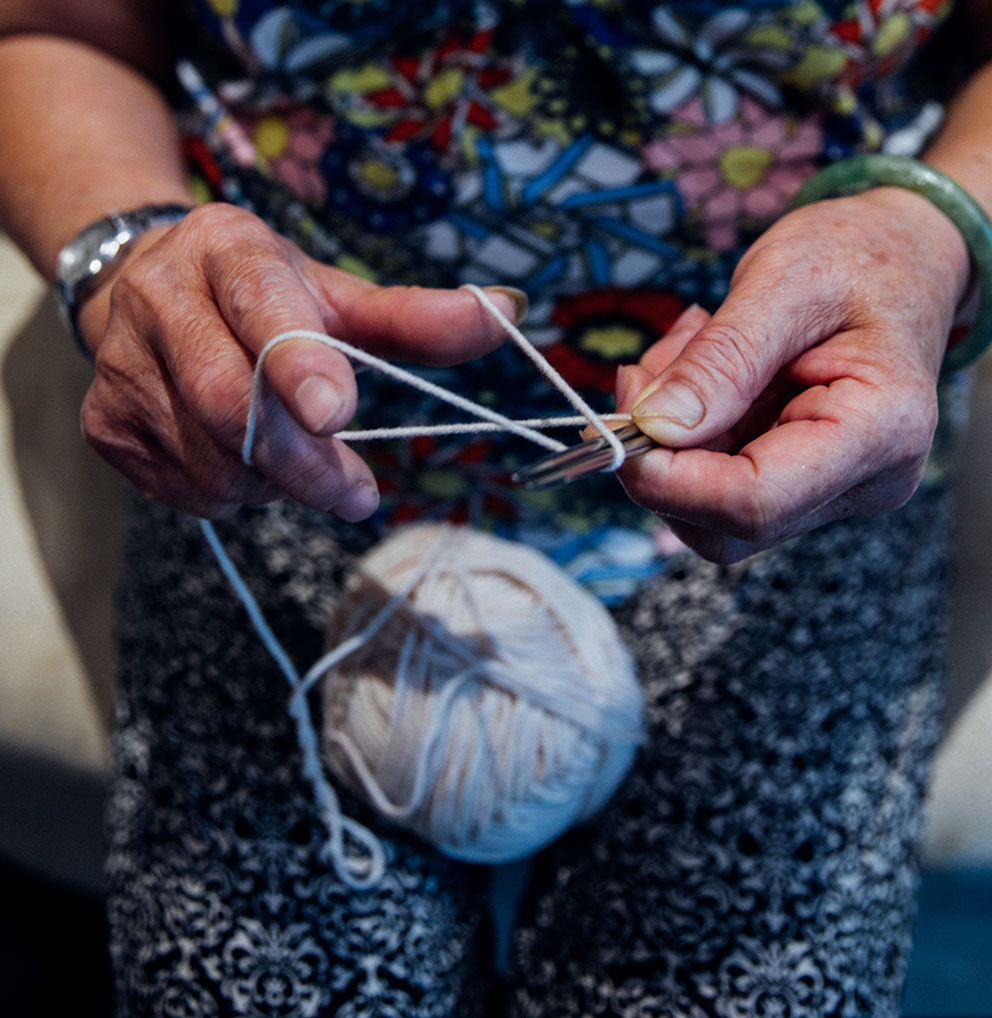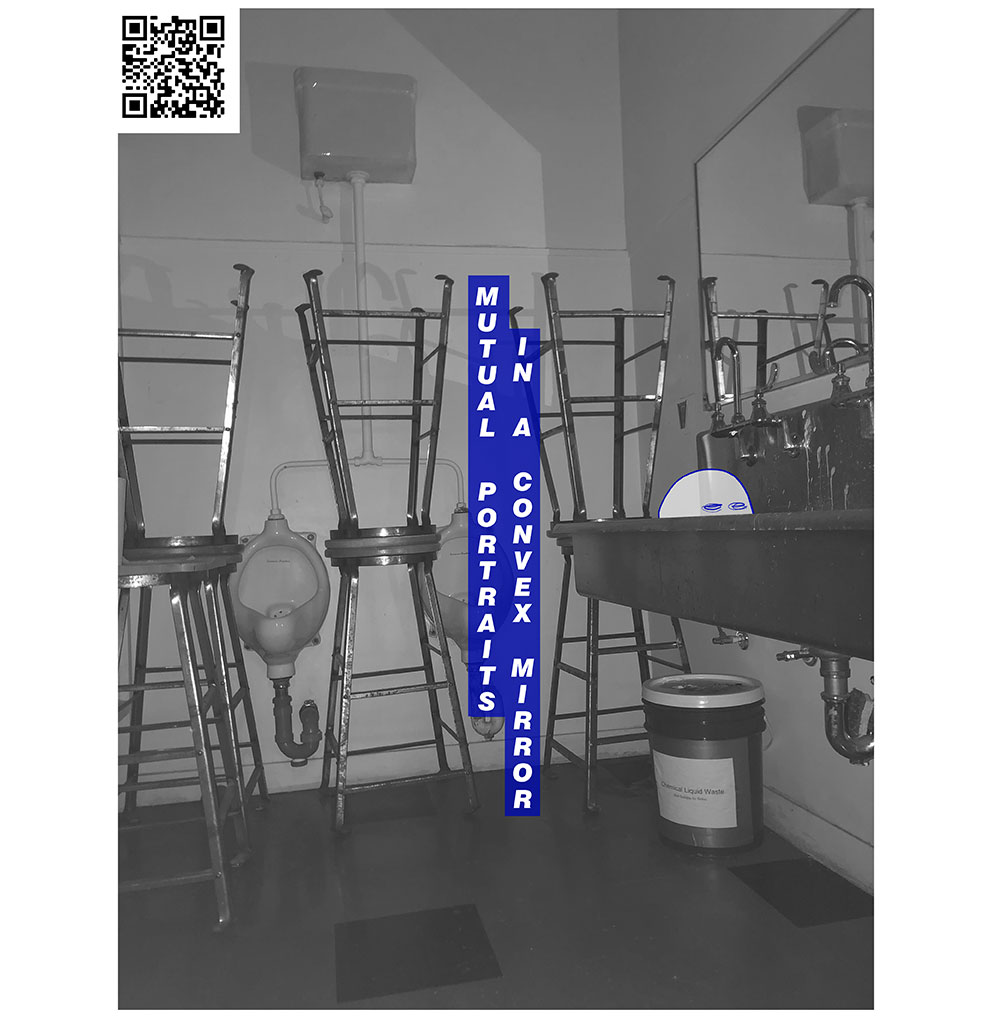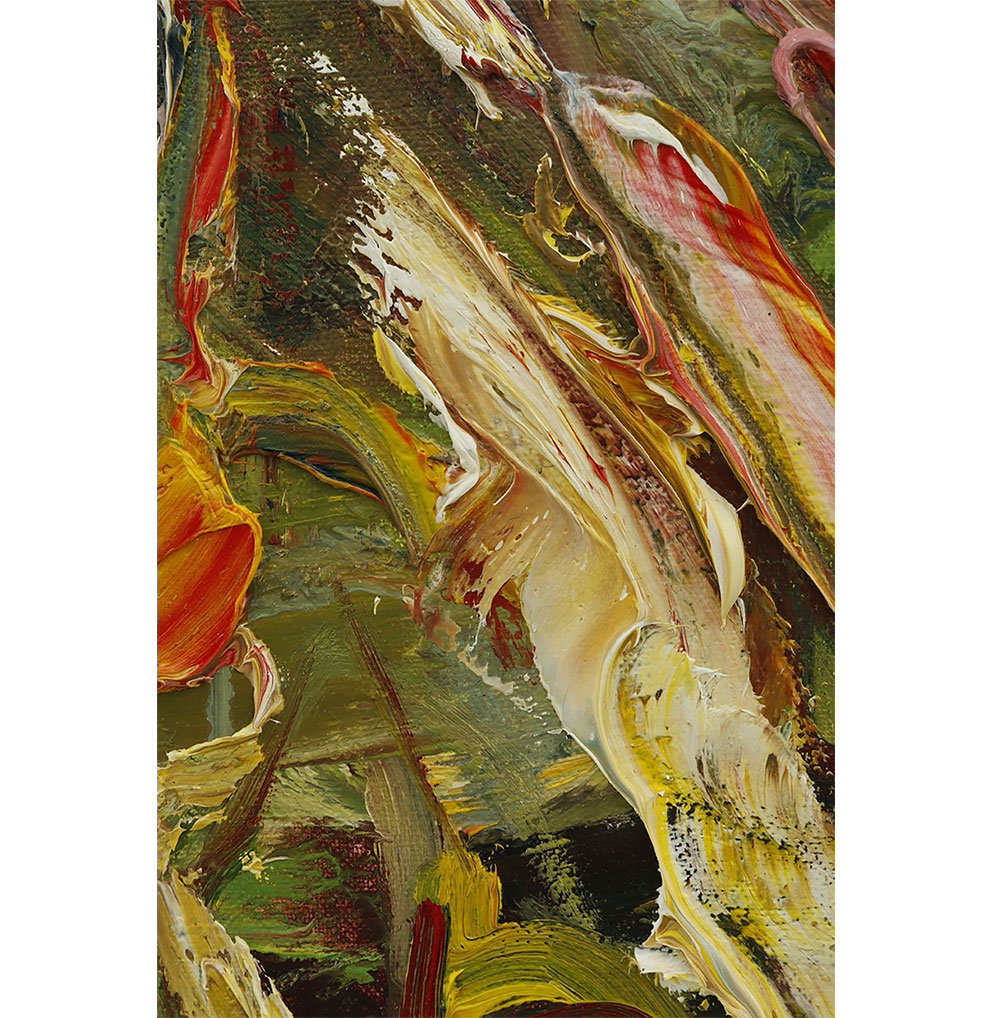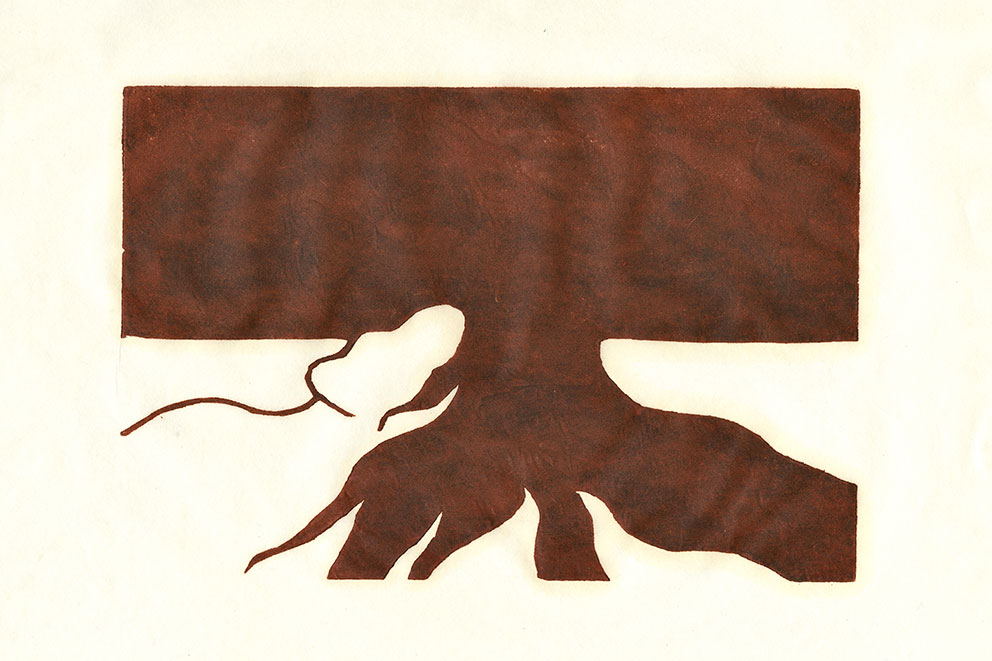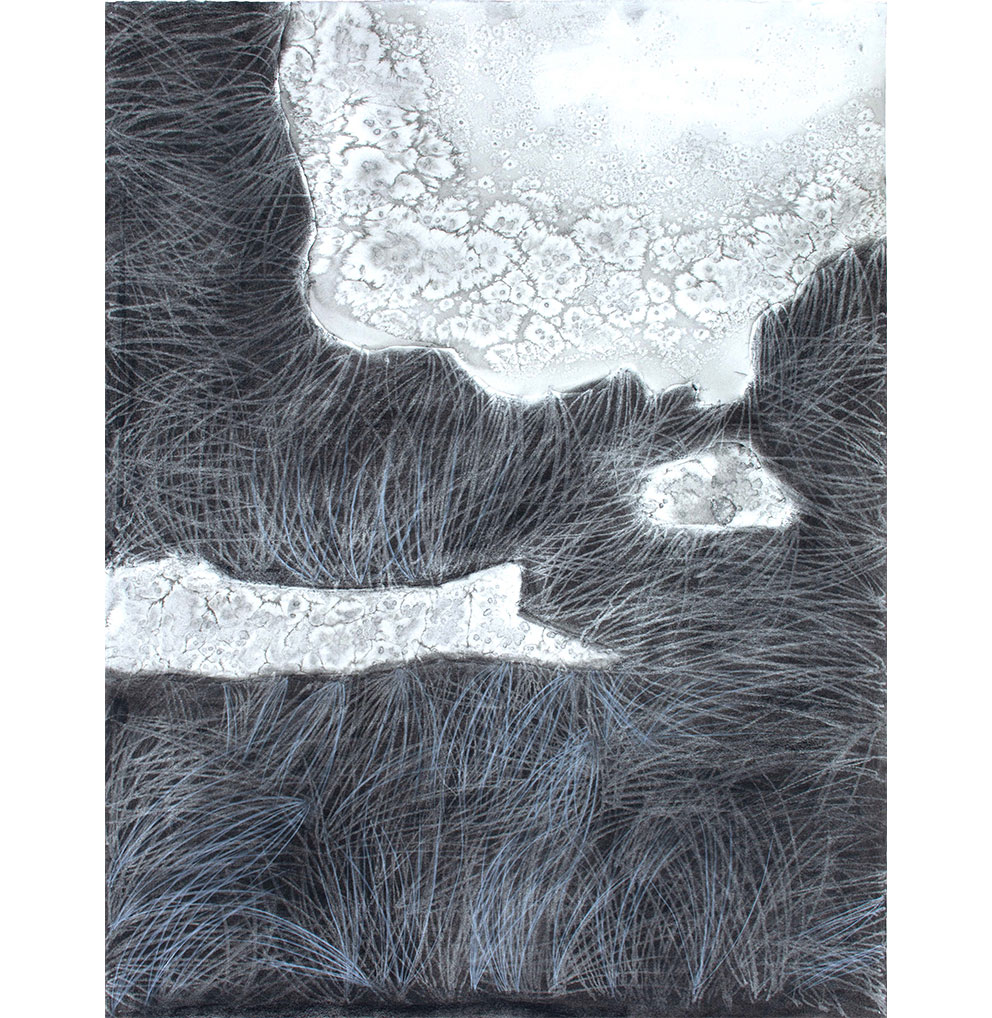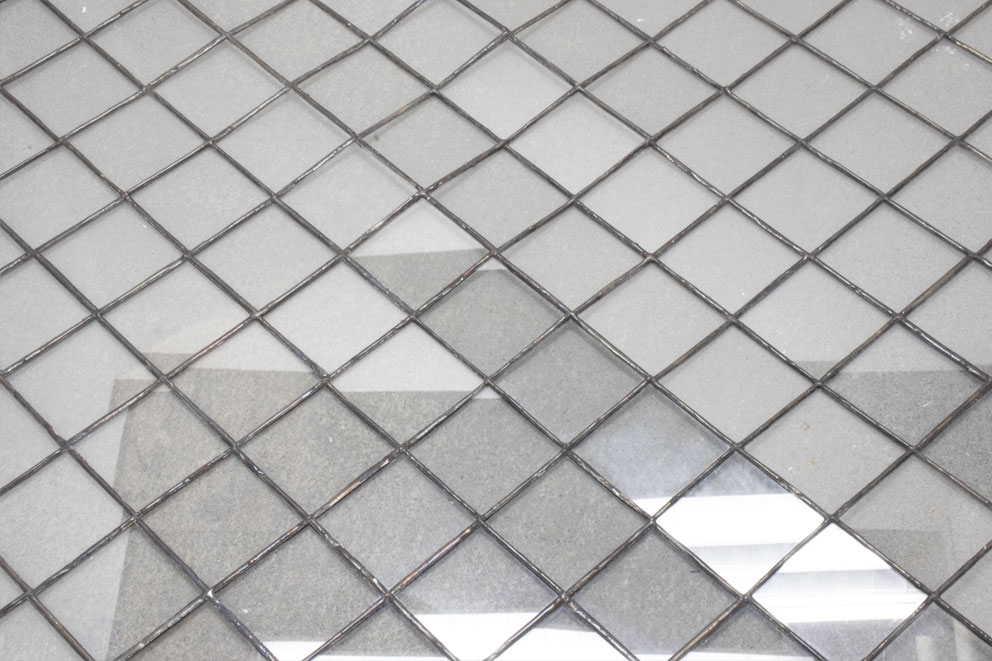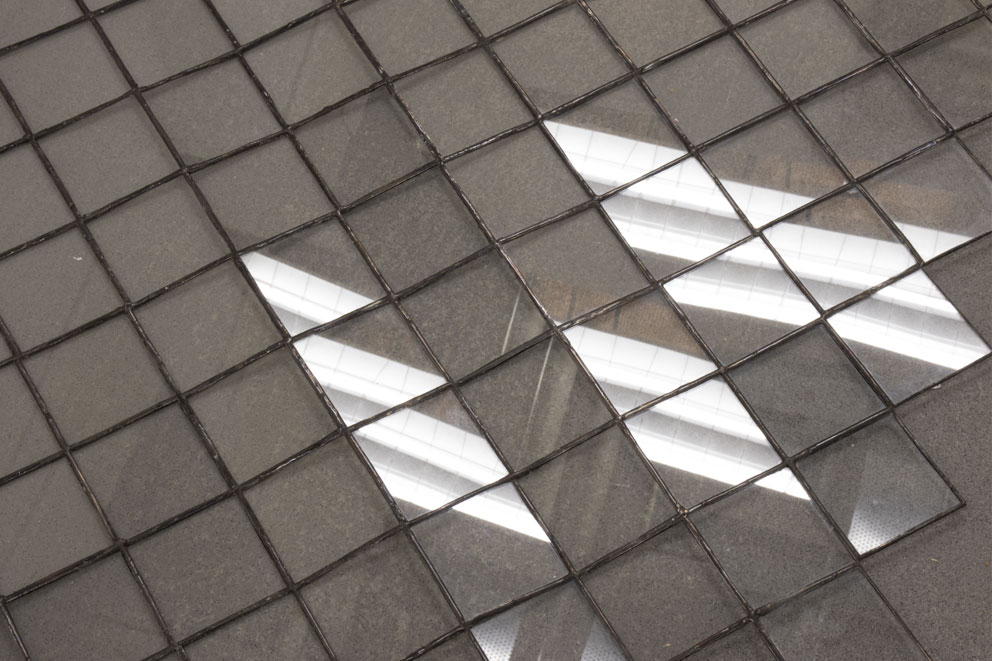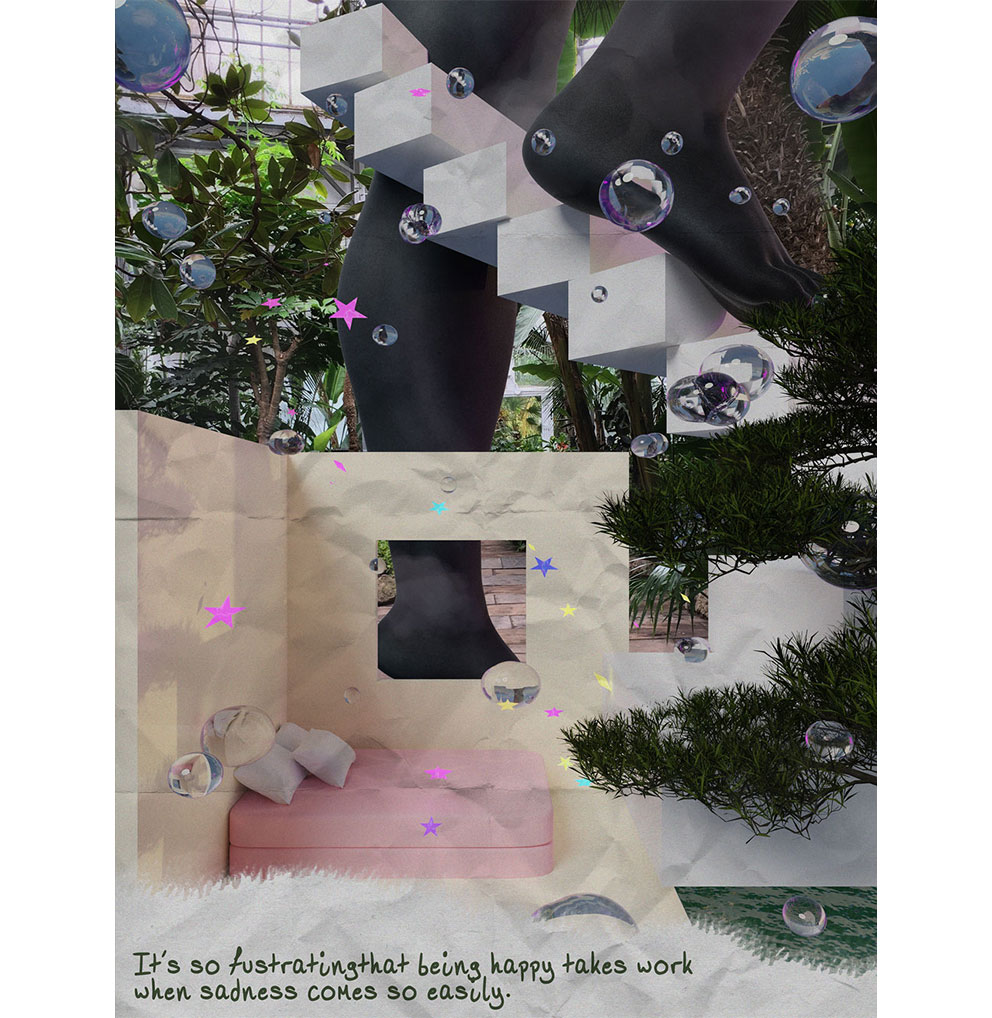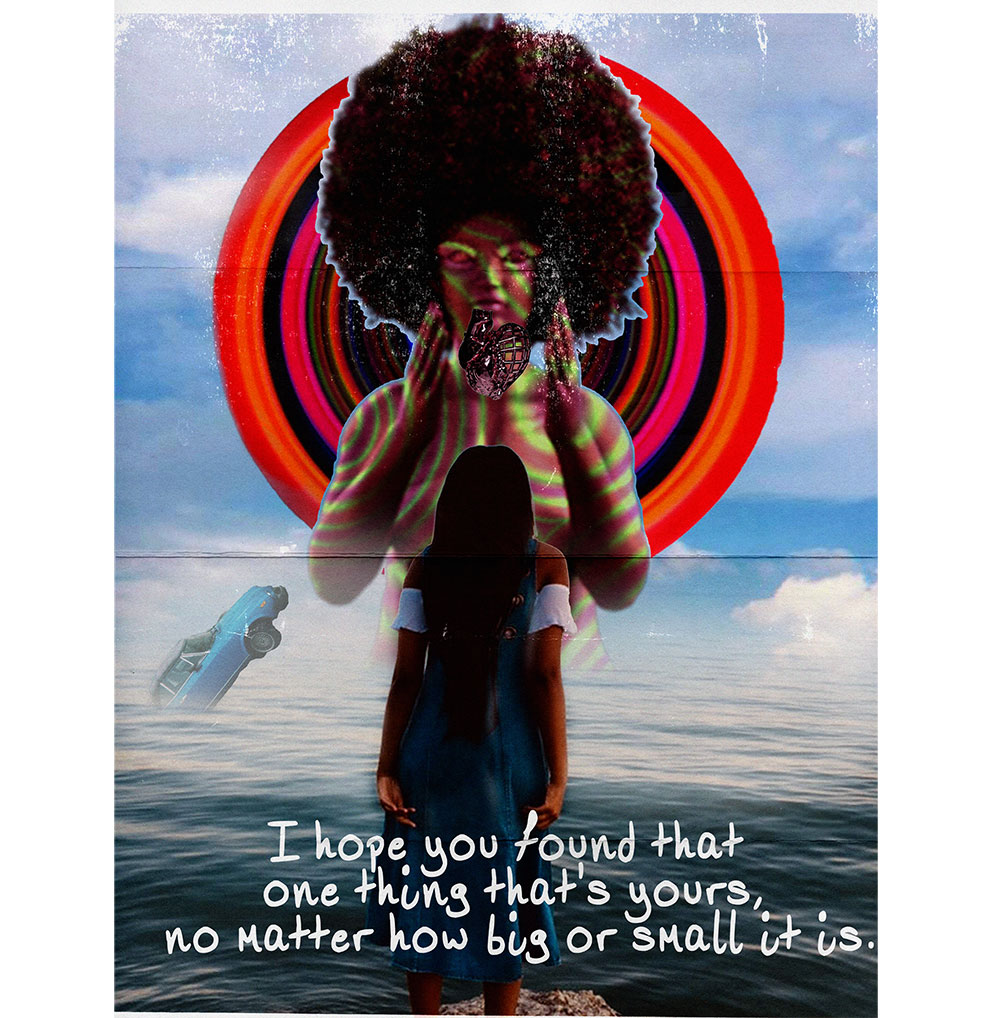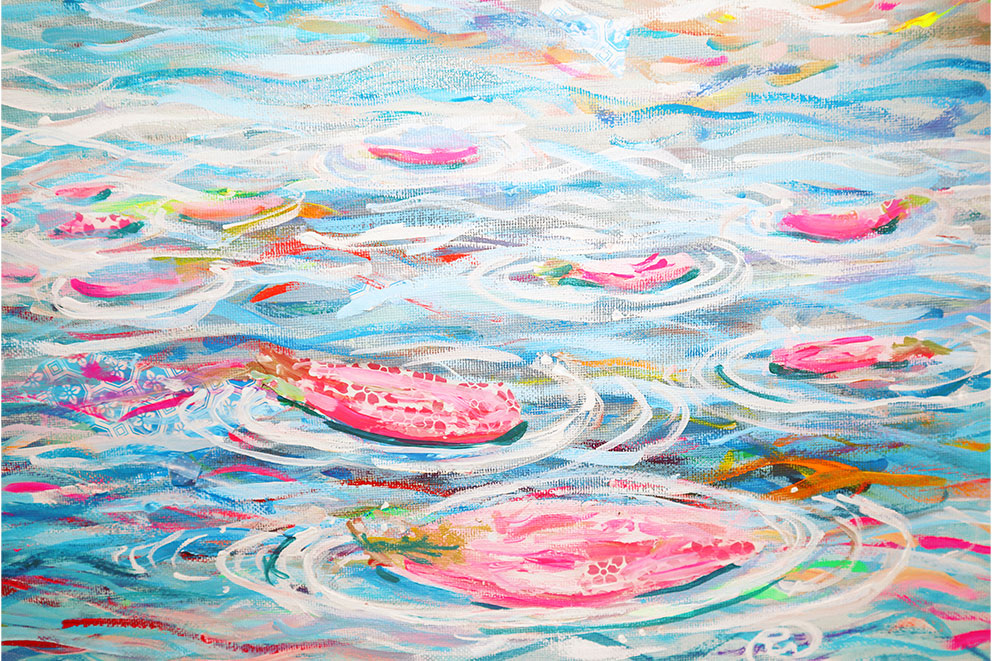Shelley Peterson Student Art Exhibition
2022
The University of Toronto Shelley Peterson Student Art Exhibition is an annual exhibition celebrating the diverse artistic excellence of undergraduate students enrolled in visual studies programs across the University of Toronto’s three campuses. The exhibition offers a meeting place for students to exchange ideas through their diverse artistic practice. Here, you will find more information about each student and their project.
Suki Wong | Veronica Cheung | Lydia Lai | Julianna Stein | Billie Raphael | Mortasha Chan | Ming Him Janet Ma |
Xintong Chen | Natalie Chiovitti | Audrey Ammann | Spenta Chothia
Antonia Grujic | Ziyan (Gabriella) Bai | Shannon Bogert | Christiana Ceesay | Rika Nakane |
Suki Wong
Density
Campus: Mississauga
Year of Study: Third
Program of Study: Art and Art History
Suki Wong is an artist from Hong Kong whose artistic practice revolves around drawing and painting. She is the recipient of the Catherine Quesnel Prize in Art and Art History and the C Magazine Award for Excellence in Drawing II (2021).
Density connects the crowded atmosphere of Hong Kong to Wong’s lived experience as someone who grew up in the city. She is familiar with its crowded and fast-paced lifestyle, but she also understands that Hong Kong’s atmosphere may seem “chaotic” or “excessive” to outsiders. The shape and scale of the work—long enough to stretch across a viewer’s field of vision and overwhelm them—and its meticulous, detailed rendering, as well as the many windows alluding to unseen inhabitants, accentuate the theme of density—visually, and in terms of population. Wong chose to create the drawing with ink for greater fluidity in her lines, resulting in long, organic drips that were later incorporated into the texture of run-down walls.
Images: Suki Wong, Density, 2021. Ink on drywall, 85 inches x 156 inches. Courtesy of the artist.
Veronica Cheung
Flat 07, 17/F, Block 28, Heng Fa Chuen, Hong Kong
Campus: Mississauga
Year of Study: Fourth
Program of Study: Art and Art History
Veronica Cheung is a Toronto-based installation artist who primarily works in the disciplines of sculpture, sound, and video. As a first-generation immigrant who was born in Hong Kong and migrated to Canada in 2014, Cheung faces many challenges of being an Asian living in a dominant Western society. She feels the constant code-switching and how living in-between two cultures has dramatically affected her daily life. Balancing the old traditions taught by her parents and the local culture and society to which she is adapting is a constant struggle. Cheung’s work preserves and promotes the traditional techniques of public and personal collective memories from Hong Kong, placing them in the context of Western society to raise the awareness of Chinese culture appropriation.
Flat 07 is a recreation of a Hong Kong apartment. It is named for the artist’s home address in Hong Kong, a way of bringing her home into Canada. The project uses mostly paper, which is packable, carriable, and recyclable. Traditional elements such as tile and dinnerware patterns from Hong Kong evoke specific memories. The entire work is executed in white, which creates a dreamy, unrealistic, and fragile feeling. This is an evolving project which Cheung will continue to add to.
Images: Veronica Cheung, Flat 07, 17/F, Block 28, Heng Fa Chuen, Hong Kong, 2021. Paper, cardboard, cloth, masonite board, 33 inches x 73.2 inches x 49.2 inches. Courtesy of the artist.
Lydia Lai
Chi Chun Lau
Campus: Mississauga
Year of Study: Fifth
Program of Study: Art and Art History
Lydia Lai’s artistic practice explores her relationship with the changing urban landscape of Hong Kong. Capturing and retelling the visual experience of being in and around the city’s unique public housing architecture, Lai’s work explores themes of memory, childhood, nostalgia, and impermanence.
Chi Chun Lau is a series of screen prints that draw on Lai’s memories of her family’s public housing apartment in Hong Kong, where she lived as a child. The prints depict the ventilation brick pattern found on the hallway walls of the apartment building with an old wall fan—a common household item when air conditioning was not easily accessed. The images of outdoor air conditioning units show how air conditioning has become more common as the climate becomes increasingly hot. Chi Chun Lau also represents a period when communal life was more prominent, as residents would sit and chat in the halls while enjoying the natural ventilation of open air. The repetition of the industrial motifs and the offset layering imitate the persistent buzzing emitted by the machines.
Images: Lydia Lai, Chi Chun Lau, 2021. Screen prints, 60 inches x 13.25 inches each; 18 inches x 12 inches. Courtesy of the artist.
Julianna Stein
Synergy Tape
Campus: St. George
Year of Study: Third
Program of Study: Visual Studies, specialization in Studio Art, minor in Women and Gender Studies
Julianna Stein is a queer graphic artist based in Tkaronto/Toronto. Her practice highlights the experiences and stories of queer and femme- presenting people in the male-dominated sport of skateboarding through film, graphic design, sound art, illustration, and print.
As a queer, femme-presenting individual, Stein found a welcoming community among Toronto skateboarders. As she became increasingly fascinated with skateboarding and skate culture, she found herself watching videos featuring “non-traditional” skateboarders and searching for representation in the sport. These sources of inspiration included video parts such as Vans’ Credits (2020) and Glue Skateboards’ Smut (2021), all filmed on outdated video cameras from classic Sony VX1000s to cheap digital camcorders. Her own short film employs the “outmoded” technologies of the camcorder and cassette tape while documenting the kinship and support flourishing within the femme skateboarding community. The deliberate medium choice creates a sense of nostalgia and romanticism, hearkening back to 1990s skateboarding recordings.
Download the video transcript here.
Images: Julianna Stein, Synergy Tape (video still), 2021. Video, 2 min 20 sec. Courtesy of the artist.
Billie Raphael
On the Fence
Campus: St. George
Year of Study: Third
Program of Study: Visual and Architectural Studies
Billie Raphael is a Toronto-based Filipino artist. Their practice explores a broad range of mediums, from illustration to sculpture and video, often depicting the minutiae of queerness and its quotidian indulgences. Raphael’s work has been featured in publications including POSTMOD (2019), Shift Magazine (2020), and ENBY Magazine (2021).
On the Fence is a series of reflections in dialogue, framing the artist’s personal thoughts and memories of their schoolyard fences. Fences can be simple, literal structures, functioning as a sort of enclosure to keep things in and out, partitioning a section of three-dimensional space. However, Raphael’s work suggests that while they primarily serve a utilitarian purpose, fences as metaphors and symbols can hold invisible histories marred by and inscribed with scars of subjugation, possession, and colonial power. They are boundaries that exist on a liminal edge.
They mark a separation of the inside from the outside, us from them, self from other. The fences discussed in these conversations can also represent moments of nostalgia, estrangement, or possession, binding people and things to their territory.
Read the accompanying collection of texts here.
Images: Billie Raphael, On the Fence, 2021. Images and texts, 11 inches x 8.5 inches. Courtesy of the artist.
Mortasha Chan
Behind the Tile
Campus: Scarborough
Year of Study: Fourth
Program of Study: Studio Art and Human Biology
Mortasha Chan is a digital artist specializing in photography and sound media. She loves exploring new places while capturing inspiring moments with her camera.
The Behind the Tile series was shot at Biu Kee Mahjong, one of the last hand-carved tile shops in Hong Kong. Hand carving mahjong tiles is a traditional craft that is declining due to the digitalization of mahjong games and factories’ mass manufacturing of tiles. The artisan and the owner of the shop featured
in the photographs, Mr. Cheung Shun King, has been carving mahjong tiles for the past 50 years, witnessing the boom and bust of the industry. Hand carving is a time-consuming and delicate process consisting of carving, painting, and colouring, then scraping off paint, rubbing, and refining strokes on the tiles. Chan hopes to document the traditional craft through her lens before it vanishes, preserving the community memory shared by residents there.
Images: Mortasha Chan, Behind the Tile, 2021. Digital photography, 4640 pixels x 6960 pixels each. Courtesy of the artist.
2022 Award Winner
Ming Him Janet Ma
What do you Want to do Today?
Campus: St. George
Year of Study: Fourth
Program of Study: Visual and Architectural Studies, with a minor in Anthropology
Born in Hong Kong, Janet Ma is currently living and studying in Toronto. She often works with found materials and finds her inspiration in everyday life. She is interested in exploring her own cultural identity as a Chinese student living away from home.
What do you Want to do Today? is a composition of 30 calendar sheets, taken from a traditional lunar calendar given to Ma in Chinatown while she was grocery shopping.
The artist picked out pages containing suggested good-luck rituals or stories related to specific holidays and overlaid them with her own drawings illustrating how she typically spent those holidays (at times in mundane ways, while living away from home). The artwork combines traditional paper cutting with digital drawing and collage and is accompanied by the text “A Guide to What
To Do Today,” which translates some of the detailed recommendations from the calendar and highlights the arbitrary nature of those rituals in the context of the artist’s urban lifestyle.
Download the accompanying text “A Guide to What To Do Today” here.
Images: Ming Him Janet Ma, What do you Want to do Today?, 2021. Ink on calendar sheets, paper cut, digital collage, 47.5 inches x 45 inches (9.5 inches x 7.5 inches each). Courtesy of the artist.
2022 Award Winner
Xintong Chen
Qiulan Yao 姚秋兰
Campus: Scarborough
Year of Study: Fourth
Program of Study: Studio Art, minor in Economics for Management Studies, Media Studies
Born and based in China, Xintong Chen is a photographer focusing on the small details of life. In her work, Chen uses her sensitive lens to frame daily gestures, capturing them as meaningful and long-lasting moments.
The Qiulan Yao is a series dedicated to Qiulan Yao—the artist’s grandmother. During the pandemic Chen moved back from Toronto to live with her grandmother in China. This series documents the memorable moments they spent together. Through multiple close-ups of hands busy in daily chores and leisure, Chen creates a portrait of these times. The rough skin texture, along with the warmth of the care-taking hands, reflects on the comfort and strength in family care.
Images: Xintong Chen, Qiulan Yao, 2021. Photography, 16 inches x 16 inches each. Courtesy of the artist.
Natalie Chiovitti
Etch a Sketch (Feelings during the Covid-19 Pandemic)
Campus: Mississauga
Year of Study: Fourth
Program of Study: Art and Art History & Communication, Culture, Information and Technology
Natalie Chiovitti is an interdisciplinary artist engaged in a combination of traditional and contemporary approaches through a variety of art forms. She explores notions associated with pop-culture, technology, nature, and their influence on human experiences and relationships. Chiovitti integrates her work as graphic designer and illustrator in marketing, publishing, and education fields into her artistic practice.
Etch-A-Sketch (Feelings During the Covid-19 Pandemic) is a non-narrative typological series that explores the human experience of the pandemic though a hopeful, child-like lens. The artist was inspired to create this piece after finding an old Etch-a-Sketch toy. The act of drawing on the Etch-a-Sketch is inherently temporal, as the drawings disappear when the toy is shaken. This photographic series acts as a record of the momentary drawings. The juxtaposition of the toy’s hopeful presence with the busy, geometric, and anxious line drawings visually references the artist’s fluctuating feelings and COVID-19 case graphs. Together they reveal and inspire hope in the current situation of the pandemic.
Images: Natalie Chiovitti, Etch-a- Sketch (Feelings During the COVID-19 Pandemic), 2021. Mixed media, 18 inches x 18 inches. Courtesy of the artist.
Audrey Ammann
Mutual Portraits in a Convex Mirror
Campus: St. George
Year of Study: Third
Program of Study: Visual and Architectural Studies
Audrey Ammann’s work uses video, virtual reality, illustration, and sculpture to explore themes of identity, community, nostalgia, and the hyperreal in popular culture. Alongside her practice, Ammann holds the role of curator for the Daniels Art Directive.
Mutual Portraits in a Convex Mirror consists of a piece of writing and a series of posters that Ammann created to capture her experience— and that of her peers—of returning to in- person studio courses at the Visual Studies department during the pandemic. The images of studio spaces are subverted and modified with illustrations, overlaid with passages from the titular poem, “Self-Portrait in a Convex Mirror” by John Ashbury. Ammann cites Theaster Gates as another source of visual inspiration, looking to artists who use site specificity to not only indicate community need, but also to provide a remedy. The images include a QR code to a student survey that Ammann used to inform her writing, making the creative process a collaborative one.
Download the accompanying text here.
Images: Audrey Ammann, Mutual Portrait in a Convex Mirror, 2021. Zine, including mixed media, print on paper, 11 inches x 8.5 inches. Courtesy of the artist.
Spenta Chothia
Weeds in my Backyard
Campus: Mississauga
Year of Study: Fourth
Program of Study: Art and Art History
Spenta Chothia’s artistic practice focuses on sculpture and paintings.
Weeds in my Backyard was created for the enjoyment of painting a subject that is often overlooked. Inspired by the woods around the artist’s home north of Toronto, it depicts weeds growing in the artist’s backyard. The work began with a rough sketch that the artist then painted over, using multiple layers to build a thick impasto. The use of texture and multiple colours brings beauty and liveliness to the weeds.
Images: Spenta Chothia, Weeds in my Backyard, 2021. Oil painting, 36 inches x 24 inches. Courtesy of the artist.
Antonia Grujic
Again
Campus: Mississauga
Year of Study: Fourth
Program of Study: Art and Art History
Antonia Grujic is a mixed-media artist specializing in print-making techniques, including dry point and silkscreen prints. Her work often investigates her sense of self and surrounding environment, which brings forward topics surrounding mental health and her relationship with society.
Again is a series of twelve woodcut prints depicting a woman lying in bed. The repetitive sequence of prints highlights the nature of daily life when struggling with mental illness: small tasks feel like an immense struggle and inertia can be overwhelming.
Images: Antonia Grujic, Again, 2021. Woodcut prints, 12 works of 11.5 inches x 15 inches. Courtesy of the artist.
Ziyan (Gabriella) Bai
Recovery
Campus: Scarborough
Year of Study: Fifth
Program of Study: Studio Art and Media Studies
Gabriella Bai is an interdisciplinary artist who experiments with various mediums, subjects, and themes to avoid a single defined style. Bai is also keen to use art as a means to interrogate the relationship between individual and collective identity. Identity, for Bai, is completely fluid and mostly related to one’s lived experiences. Therefore, according to her, it is better to avoid any attempt at identity definition. This is reflected through the mediums she uses and the subjects she examines.
Recovery documents the process of a person trying to recover from a loss of identity as a result of his or her depression. The artist depicts the stages of snow melting on grass through a semi-abstracted approach. The juxtaposition of abstract washes and salt marks against the more structured charcoal drawings of grass contrasts struggle and hope for renewal. Snow as a motif also points to the first-generation experience of overcoming alienation in an unfamiliar environment. Bai had never seen snow growing up, until she moved to Canada and experienced its winters.
Images: Ziyan Gabriella Bai, Recovery, 2021. Ink washes and charcoal on paper, 30 inches x 22 inches each. Courtesy of the artist.
Shannon Bogert
Simple as that
Campus: Mississauga
Year of Study: Third
Program of Study: Visual art and Art History
Shannon Bogert began creating art at an early age. Working from home in her basement studio, she experiments with concepts and materials that are personally meaningful and interesting to her. Some key areas of focus in her work are being environmentally friendly and collecting and re-purposing recycled fabric and materials.
Simple as that was created in response to an article titled “The Complexity of Loneliness” by Javier Yanguas, Sacramento Pinazo- Henandis, and Fransico José Tarazona-Santabalbina. The authors describe the concept of being lonely as rooted in weakness and self-pity, claiming that it is something an individual should be able to simply eliminate. Throughout the article, loneliness is compared to frailty, a weakness in character or morals. Bogert’s work is a critique of the notion that eliminating loneliness is a simple task. While the article compares getting rid of loneliness to something as easy as taking off a blanket, Bogert created a fragile, heavy glass blanket that is not easy to move or take off and that would break if such a task were to be attempted.
Images: Shannon Bogert, Simple as that, 2021. Clear glass and solder, 60 inches x 37 inches. Courtesy of the artist.
2022 Award Winner
Christiana Ceesay
Lock or key, or something to Throw away
Campus: Scarborough
Year of Study: Fourth
Program of Study: Studio Art and Media Studies
Christiana Ceesay is an immersive visual artist. Her artworks feature vibrant colours inspired by anime and cartoons, as well as African wax print fabric. Black bodies in nature and space feature prominently in her works. Ceesay also focuses on the relationship between humans and the land, and the healing, joyous perspectives of nature.
Lock or key marks the artist’s shift to the exploration of a different type of relationship—between something that is too frequently seen to be mundane, i.e., the QR codes, and something that is deeply valued and personal, intimate: the diary-entry stories behind the collages. If viewers are willing to take the effort to unlock the QR codes, they will enter another world of whimsical collages featuring photographs taken by the artist from the age of 17 to 20, paired with letters the artist wrote to herself at the same time. Lock or key is part of a series documenting an uncertain period of transition in Ceesay’s life. The layer of obscurity provided by the QR codes reinforces the personal and intimate nature of the work.
Images: Christiana Ceesay, Lock or key, or something to Throw away, 2021. Digital QR codes and collages, 1,667 pixels x 1,667 pixels and 24 inches x 18 inches each. Courtesy of the artist.
Rika Nakane
Reverie of Relief
Campus: Scarborough
Year of Study: Fourth
Program of Study: Studio Art and Neuroscience
Rika Nakane is a multimedia artist who experiments with the hybridity of digital art, video, photography, and painting. Her works are often deeply introspective as she wrestles with themes of race, gender, perception,and culture. The artist views her work as a documentation of her emotional states and a recognition of her self-identity, kindling intimate connections between her work and its viewers.
Inspired by the Impressionist and Japonisme Movements, Reverie of Relief is an illustration depicting acceptance, tranquility, and escapism. The artist felt that as she reached out for mental health support, began meditation and mindfulness, and regained inner peace, she began to feel free. This state of mind is portrayed through a person floating in flowing, peaceful waters. Nakane created layers of light, thin brush strokes and incorporated origami and stickers into the painting. The many different colours represent the complicated past and emotions of the floating figure. Yet, the harmonious coexistence of colours indicates the acceptance of these emotions and ease of the mind.
Images: Rika Nakane, Reverie of Relief, 2021. Acrylic on canvas, 21 inches x 29 inches. Courtesy of the artist.
Credits
Images and audio/video clips all courtesy of the artists.
The 2022 University of Toronto Shelley Peterson Student Art Exhibition is curated by Moshi Li, Loren Wang, and Natalie Scola as part of their Master of Museum Studies Exhibition Project at the Faculty of Information, University of Toronto. Their project mentor is Dr. Liora Belford.
2022 Award Winners and Juror’s Remarks
Each year, the Shelley Peterson Student Art Exhibition provides a valuable opportunity for us to truly consider the conceptual priorities and material trails that emerge from an inspiring new generation of creators. While it is impossible to ignore the challenges, injustice, and loss made tangible during the pandemic, this year’s cohort of artists have nevertheless produced profound work capturing moments unique to this time with creative observation, tolerance, and perseverance.
Towards this, the three works that stood out for me used daily gestures and seemingly mundane activities to explore themes surrounding intergenerational memory, ritual, and personal archiving practices. As this year’s exhibition is being presented through digital means, respecting our remote reality, each work capitalizes on the adaptive and functional attributes of their mediums (the camera lens, the QR code, the calendar print) to further invoke and seize these singular, relevant flashes of individual remembrance and introspection.
Congratulations to the curators for their vision and well-considered selection. Congratulations to the three award winners and all the exhibiting artists—it was such a pleasure reviewing your work in the comfort of my home!
Emily Fitzpatrick
Artistic Director, Trinity Square Video
Back to 2022 University of Toronto Shelley Peterson Student Art Exhibition






